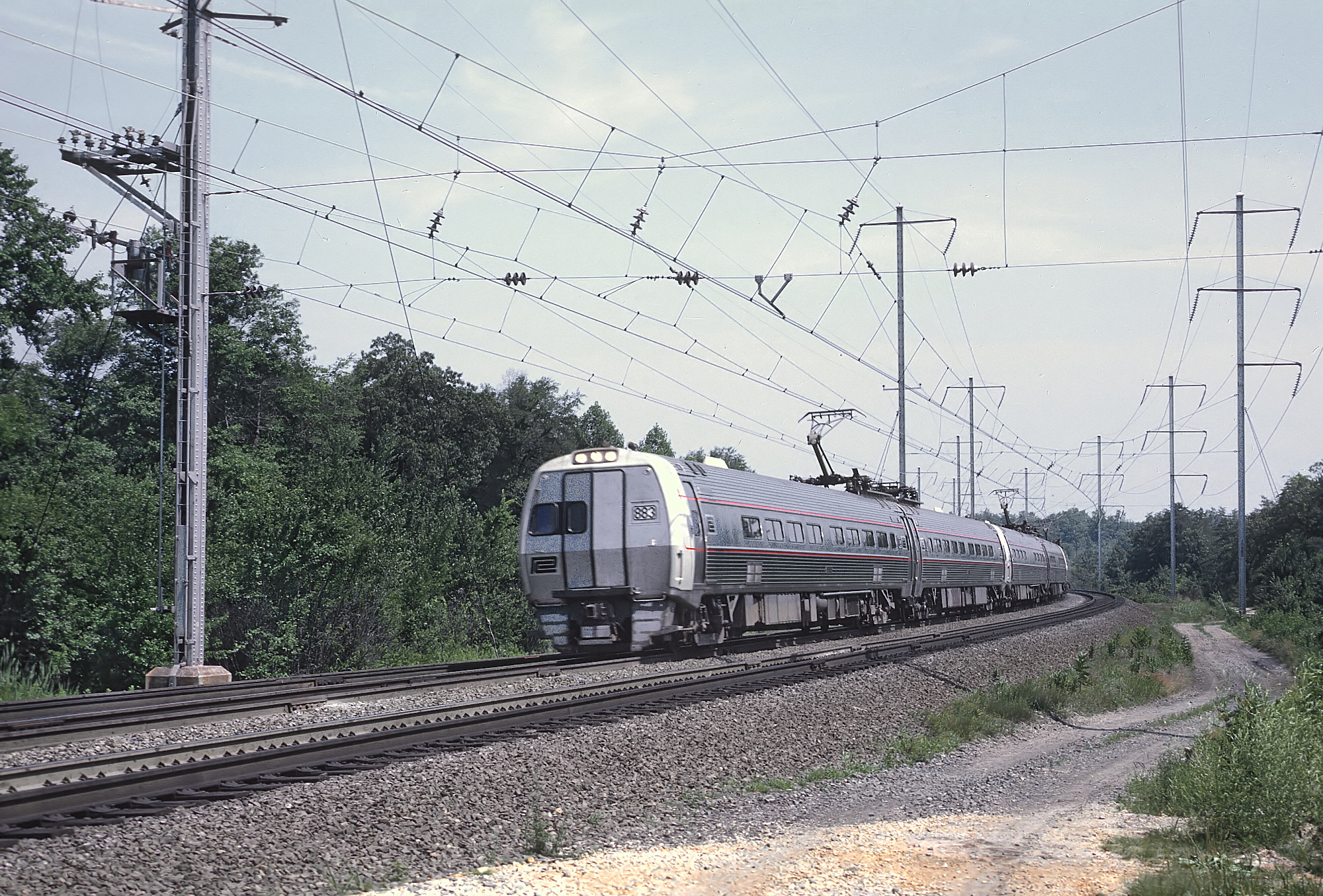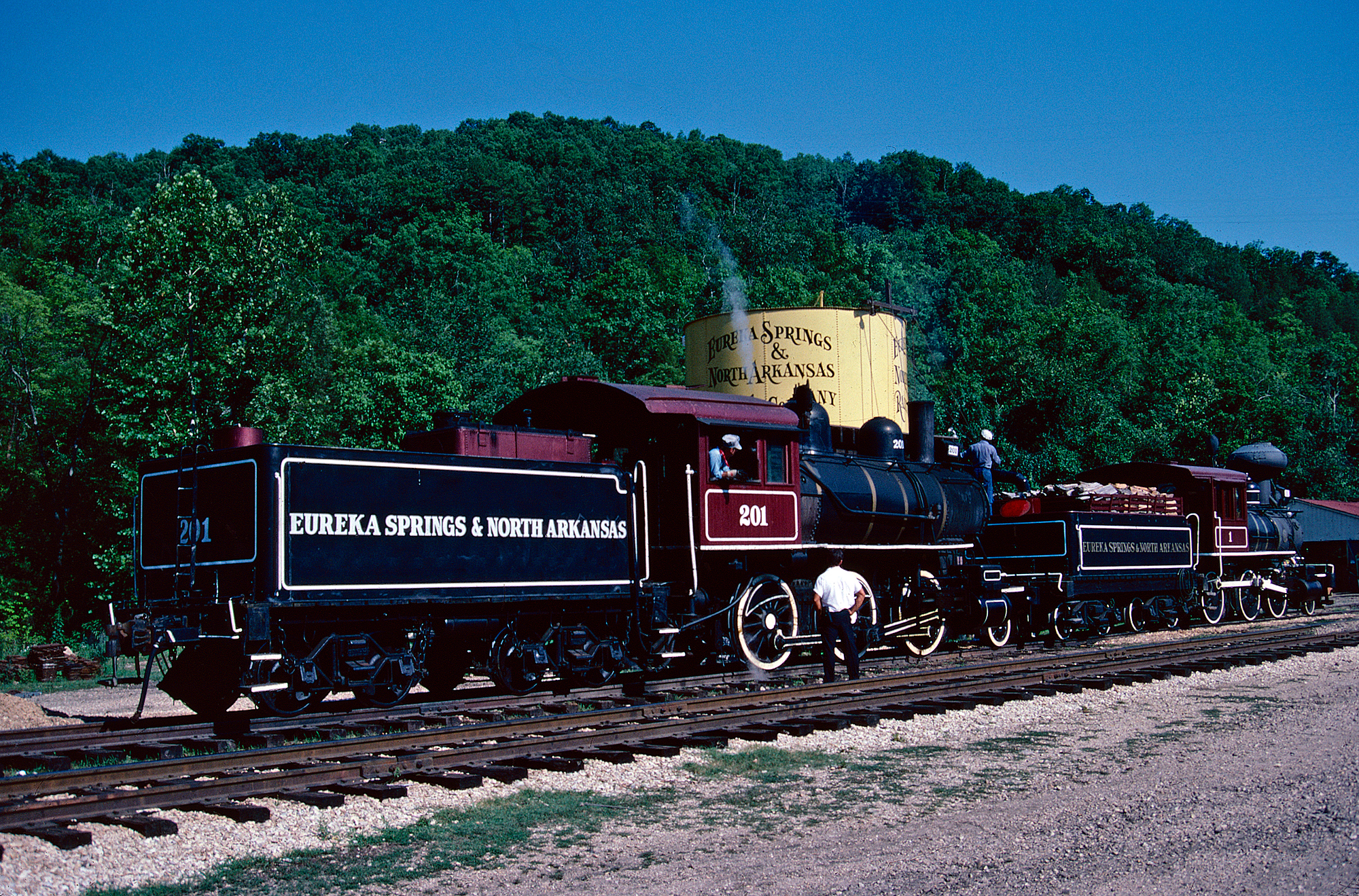The Metroliners (Trains): Specs, Top Speed, History
Last revised: February 25, 2025
By: Adam Burns
The Metroliner was a high-speed train service between Washington D.C. and New York City along the electrified Northeast Corridor, operating from 1969 until 2006.
It was initially ordered by the Pennsylvania Railroad and briefly operated by Penn Central Transportation. The electrified cars were later acquired by Amtrak in 1971 and remained in service for the next 35 years.
The Metroliner was known for its high-speed service, reaching speeds of up to 150 mph, making it one of the fastest train services in the United States. Generally, the units cruised at speeds of between 100-125 mph
The Budd-built cars were plagued with issues right from the start - an order by the Southeast Pennsylvania Transportation Authority) was canceled in 1968 and Amtrak later retired the power cars altogether after 1982.
The cars themselves, however, remained in operation - lead by Amtrak's new AEM-7 locomotives. Following the arrival of the Acela Express Express sets and vetting of these trainsets, the final Metroliner cars were finally retired in 2006.
Photos
 A Penn Central "Metroliner" set, led by #883, hustles along the Northeast Corridor at Harman, Maryland on a very hot (104 degrees) on June 28, 1969. Roger Puta photo.
A Penn Central "Metroliner" set, led by #883, hustles along the Northeast Corridor at Harman, Maryland on a very hot (104 degrees) on June 28, 1969. Roger Puta photo.Development
The Metroliner was a high-speed, electric, self-propelled rail car developed by the Budd Company, an American metal fabricator and a major supplier of body components to the automobile industry.
With a rich history spanning several decades, the Budd Company was chosen for its expertise and track record in producing quality, durable and efficient rail vehicles.
The development of the Metroliner was an impressive joint enterprise between numerous parties. The Pennsylvania Railroad, a pioneering railroad company, the U.S. Department of Transportation, and the Budd Company all came together spurred by the High Speed Ground Transportation Act of 1965.
The Act was a push to develop high-speed rail service (HSR) in the Northeast Corridor. General Electric, renowned for their work in electrical and power systems, was also heavily involved in the project.
The Metroliner endeavor remains one of the most successful by the U.S. government to actually increase speeds and provide quasi-HSR during the 20th century.
Congress passed, and President Johnson signed into law, the act which, "...authorized $90 million for the creation of an Office of High-Speed Ground Transportation which supported research, development, and construction of a high-speed demonstration project in the Northeast Corridor."
As part of the project, the Commerce Department, and later the Department of Transportation, contributed $11.5 million to the project while the PRR kicked in an additional $44.5 million and agreed to operate the service.
Finally, a contract of $21 million was awarded to three builders: the Budd Company, General Electric, and Westinghouse in actually developing the equipment.
It was the 6th of May, 1966 when the Pennsylvania Railroad placed a substantial order with the Budd Company for the Metroliner cars. The order was for 50 of these self-propelled rail cars designed to operate at high speeds and provide unprecedented passenger comfort.
In addition, SEPTA placed an order for 11 cars to serve its Philadelphia-Harrisburg service although ultimately refused the equipment due to their growing mechanical issues. These were subsequently leased by Penn Central.
There were a total of 61 cars produced by Budd between 1966-1968 at a cost of $26 million. One standout feature of the Metroliner was its swift speed. At the peak of its operation, the Metroliner was recorded to have reached an impressive top speed of up to 160 miles per hour.
Utilizing the overhead catenary method, the Metroliner was designed to operate efficiently on the PRR's 11,000-volt, alernating current Northeast Corridor electrification. The high voltage ensured the rail cars maintained their high-speed performance, essential for their role in the high-speed transportation network.
Mechanical Issues
In spite of its advanced design and operation, the Metroliner service faced some significant electrical issues. Notably, many cars had issues with their electric control systems, leading to operational delays and costly fixes.
The Budd Company had been lauded for its development of Burlington's early Pioneer Zephyr streamlined trainset of 1933-1934. In addition, the manufacturer had produced many fine lightweight passenger cars throughout the 1950s for the Santa Fe, Burlington, and other railroads.
Finally, it was lauded for its cataloged RDCs, or Rail Diesel Cars, which helped railroads reduce operating costs in the face of declining passenger patronage. However, not everyone was convinced of Budd's perception as a world-class builder, especially as the nation entered the high technology, electronic age.
As Robert Watson noted, a middle manager at the PRR at the time, "...the [Metroliner] cars that were being built..." followed a routine-like manufacturing process in which they were "...copies of the last edition with a shinier surface or something."
Budd also lacked the necessary electricians and engineers to build increasingly sophisicated and technologically advanced equipment. While the company produced the basic stainless-steel carbodies, much of the other work was outsourced: General Steel Castings produced the trucks while Budd purchased the light fixtures, electrical outlets and other components for the cars.
As Russell Jackson of Klauder and Associates notes, Budd carried out the Metroliner contract "without sufficient engineering background" and its limited innovative capacities drove up costs, resulting in the company losing millions on the project. What Budd produced was described as being no more sophisicated than "low speed subway vehicles."
Inauguration
Penn Central began its operation of the Metroliner service on January 16, 1969 - a day after VIPs were treated to a trip in the new equipment. This marked the first commercial run of Metroliners, a significant moment in the journey to high-speed rail travel in America.
Amtrak assumed control of the Metroliner service on May 1, 1971. This transition marked the beginning of a new era for the iconic high-speed rail cars under a federally funded railroad company.
On board the Metroliners, passengers were treated to a range of services that contributed to a convenient and comfortable journey. These included comfortable seating, large viewing windows, and in some versions of the cars, a mini snack bar or galley.
The Metroliners served as a vital connection for several major cities situated along the Northeast Corridor. These included New York City, Philadelphia, Baltimore, and Washington D.C.
Stretching over a considerable 456 miles, the Northeast Corridor was the primary route the Metroliner operated on. This integral route is the busiest passenger railway line in the U.S., connecting numerous states and cities.
Average journey times varied depending on the stops made, but typically, a Metroliner express trip from New York to Washington took approximately 2.5 to 3 hours - a significant improvement over conventional service.
When researching the Metroliner's development from a historical perspective it is then not terribly surprising the cars ran into mechanical issues almost right from the start. SEPTA refused its 11 cars in August, 1968 which were picked up by Penn Central.
Interestingly, as it turns out Penn Central by then had become disinterested in the entire concept. It was no longer interested in the Metroliners and went to court with Budd in November, 1968 to refuse the order. Ultimately, the railroad elected to begin service the early the following year.
The Metroliners were intended to operate at safe speeds of 120 mph but problems with the cars' motors forced speeds to be reduced to 110 mph. By the early 1970s speeds were further reduced to just 100 mph.
Amtrak
When Amtrak took over the Northeast Corridor on May 1, 1971
In addition, the power cars proved unreliable and Amtrak began simply pulling the cars with conventional locomotives - then GG-1s and E60s, while later AEM-7s were utilized - as early as January, 1978. The final power cars were pulled from service in 1982.
Final Years
The final Metroliner operated on its original route until December 1, 2006. Following the retirement, the Metroliner cars continued to be used across the Amtrak network in various capacities, marking a significant chapter in the history of rail travel in the U.S.
In sum, the Metroliner high-speed rail cars, made by the Budd Company under collaboration with various transport and manufacturing giants like the Pennsylvania Railroad, the U.S. Department of Transportation and General Electric, really shaped the history of American rail transport.
From inception under the High Speed Ground Transportation Act of 1965 to their final retirement in 2006, the Metroliners have become an iconic symbol of the U.S's commitment to high-speed, efficient, and comfortable rail transport across the Northeast Corridor.
Recent Articles
-
Arizona Railroad Museums: A Complete Guide
Apr 16, 25 01:17 PM
Learn about Arizona's rich history with railroads at one of several museums scattered throughout the state. More information about these organizations may be found here. -
Arkansas Railroad Museums: A Complete Guide
Apr 16, 25 12:59 PM
The state of Arkansas is home to a handful of small railroad museums. Learn more about these organizations here. -
Alabama Railroad Museums: A Complete Guide
Apr 16, 25 12:30 PM
Alabama, with its storied past and vibrant connection to the railroad industry, is home to several captivating railroad museums.

